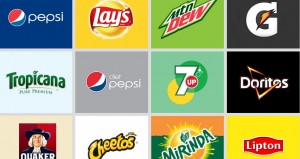
If you’re marketing at a business with multiple products, then you may often run into issues of conflicting goals and agendas. Different product teams might be competing for resources, or could be operating separately from the other teams or divisions. The problem is that while you clearly see how these products are connected, your customers don’t.
For example, if you’re a consumer packaged goods company (CPG), the brand managers for each of your products are probably working with multiple agencies – one in charge of creative, another managing your go-to-market strategy, another for press releases (note: all of these agencies are responsible for regularly wining and dining you).
So how can you help your buyers see your company as a single, unified brand? And how can you market multiple products without diluting your message, or overwhelming your audeince?
1. Prioritize Your Products
Brands with multiple products are always in danger of confusing their audiences – if someone is interested in two products, you want to present a unified front, and you don’t want to overwhelm them with multiple messages. Marketo’s scoring capabilities actually allow you to score interest in multiple products, and by prioritizing your products, you can avoid the risk.
For example, if Product A is a higher priority than Product B, a person who is interested in both products will be primarily shown marketing related to Product A. If you’re running lead nurture campaigns, you’ll want to place that buyer exclusively in a Product A-centric nurture track. This is simply a matter of selling the most important product first – the fact that your buyer has shown interest in Product B shouldn’t be disregarded, only given less priority. You’ll still want to use this information for cross-sell opportunities and bundle deals (selling multiple products for a single price).
Note: if you’re going to prioritize your products, make sure you have buy-in from the C-suite – as a company, you’ll need to clearly define the priority of products, as well as the goals around each.
2. Base Interest on Behavior
Once you have an idea of which product is the highest priority when approaching a buyer, you’ll need ways to understand the depth of that buyer’s interest. If you have multiple brands or products, use scoring to determining that interest based on their behavior – not just who they are, demographically speaking, but what they do.
For example, if a customer is searching online for nutritional information about Pepsi products, and she clicks on a video ad for Pepsi, that customer is interested in Pepsi and should be scored accordingly – even if, according to her demographic information, she’s in the target demographic for Quaker granola bars (a product of one of the biggest multi-product consumer good companies – PepsiCo).
3. Research Personas and Lifestyle
Customers purchase brands that fit their lifestyles and their choices, which is my third tip for managing multiple product lines is to use buyer personas. Use observation and research to create personas, or fictionalized representations, of the buyers you would like to reach (or are already reaching). How do they live their lives, and what type of products would fit into their lifestyle? For example, let’s say that you make breakfast bars, and your buyer persona for that product is highly active and works out several times per week. By creating this persona, you might realize you have an opportunity to market your energy drink as well – just make sure you’re prioritizing, as we covered in the first tip.
In summary: as you market your multi-product brand, remember that customers don’t think about SKUs, or which product is owned by which brand manager – they think about how your products fit into their lives. Prioritize your products, use behavior-based scoring, and create personas to gain a deep understanding of your customers.
Are you marketing multiple products for your business? What challenges have you faced, and what solutions have you found? Let us know in the comments below.